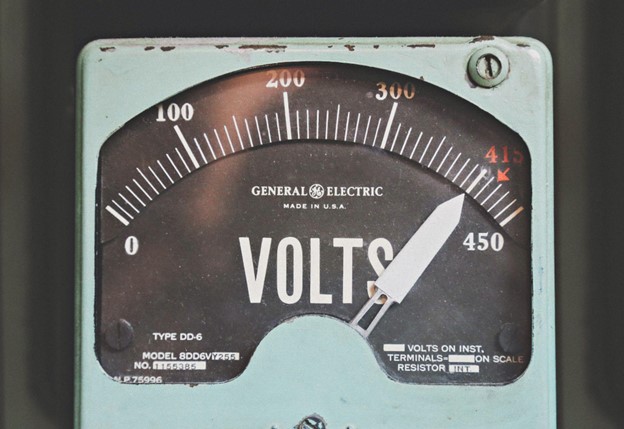You will find that monitoring your business energy consumption is one of the best ways to accomplish both. Monitoring business energy consumption is essential for identifying inefficiencies and reducing costs. By tracking usage patterns and comparing them against local benchmarks, such as carrolton electricity rates, businesses can make informed decisions about their energy strategies. Implementing smart meters and energy management systems can further enhance visibility and control over energy consumption, leading to potential savings.
Why is Energy Monitoring Important?
Monitoring your business energy consumption is important for reducing and controlling costs.
Reduce energy costs:
● Monitoring usage allows you to identify and fix high-use periods, like peak times of day or seasons.
● Once you know when your company uses the most power, you can take steps to reduce it by changing schedules or taking other measures.
● This will lower your overall electricity bill for the year by reducing the amount of electricity used during peak periods and ensuring that no one pays more than they need to.
Reduce carbon emissions:
● Monitoring usage allows you to identify ways in which businesses can decrease their carbon footprints by using less electricity overall or shifting toward renewable sources of energy when possible (like solar power). It pays to find out more about the best ways to monitor your energy usage at any given point.
Reduce the risk of power outages:
- Identifying how much electricity a business uses each month helps ensure that there will be enough on hand if there is ever an outage at home or work.
- It allows companies to avoid costly maintenance fees from utilities, by using less than average amounts of power at any given time frame throughout each day/week/month/year cycle (depending on whether they are commercial clients).
Steps for Energy Monitoring
Use an energy usage information system (EUI)
● When you use a EUI, you can measure and record the amount of electricity your business uses.
● This data helps you better understand how much electricity your business uses and why it is using that amount.
● You can also predict future trends in your energy usage patterns so that you can plan for future needs.
Use business energy monitoring software (BEMS)
● A BEMS allows you to remotely monitor businesses from anywhere if internet access is available.
● BEMSs are usually installed on desktop computers or laptops, but they can also run on tablets or smartphones if necessary.
Use a smart meter
● Smart meters provide real-time information about how much electricity a particular device is consuming at any given time, instead of just providing monthly averages as traditional grid meters do.
Use a smart thermostat or plug-in device
● If these solutions are not right for your needs, investigate other options, such as smart bulbs and power strips.
● Smart bulbs and power strips allow users to control their lights' brightness levels remotely via Bluetooth technology.
Business Energy Data
As a business owner, you should take an interest in the energy consumption patterns of your business.
You can use this data to make smart decisions about how to save money on your bills and reduce carbon emissions.
Here is what you need to know:
● Collect, store, and analyze the data from all your energy sources, including electricity usage from appliances and other equipment, natural gas consumption, and water usage. This information will be helpful when determining where improvements can be made to reduce costs without sacrificing the quality of service. Companies often provide power analyzers for engineers to accurately measure energy consumption and identify inefficiencies in the system. These tools help businesses optimize their energy usage and develop cost-effective strategies for reducing overall consumption.
● Establish a baseline for each type of energy used so that annual comparisons are meaningful and accurate.
Business Energy Monitoring Software
Choosing the right business energy monitoring software can make your life as a business owner much easier. The best thing to do when selecting a solution is to consider the following:
● Whether it is easy to install and use
● Whether it is compatible with your business's technology and infrastructure
● Whether it works with your energy provider
Energy Usage Information Systems
Energy usage information systems (EIS) are the digital tools you can use to monitor your business’s energy consumption and costs.
These systems provide information about your business’s energy use, including how much electricity, natural gas, water, and other utilities you use at different times of the day.
They also help you understand which devices in your space are consuming the most energy—which is great for identifying potential improvements to make to reduce your bills!
But before you jump right into using an energy usage information system, some things need to be considered:
● By using an EIS, you can predict when new equipment or processes will cause increased power requirements, and plan accordingly.
● You can easily track trends over time so that future projects do not result in higher-than-expected utility bills.
● Plus, since many EIS platforms come equipped with real-time monitoring capabilities based on actual usage data (rather than estimates), they can help identify problems early on as well as prevent them from occurring again after being resolved.
Conclusion
John Wooden said” “Things work out best for those who make the best of how things work.”
Knowing your energy consumption empowers you with control in the management of your business, and it is easy to get started with energy monitoring.
Simply use the tips above, and you will be able to reduce your business’s energy consumption in no time!






